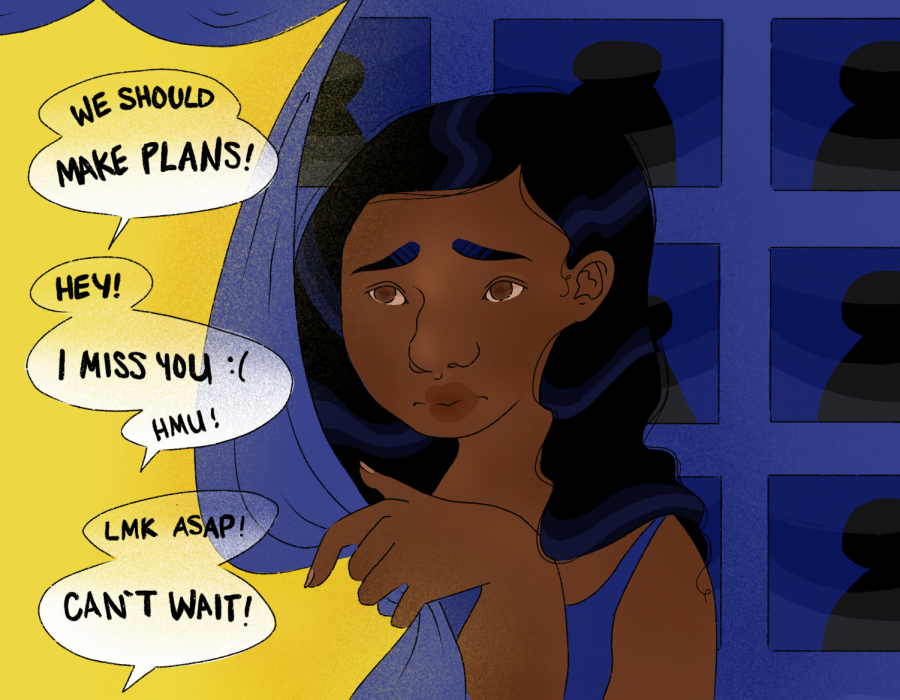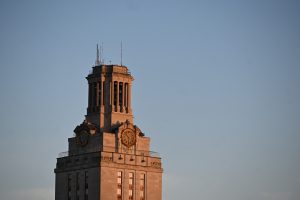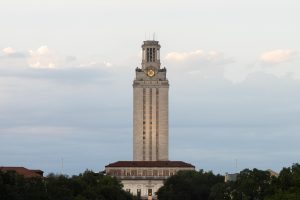Students discuss increases in social anxiety, decreases in pandemic restrictions
April 29, 2021
TW: Discussions of anxiety
Kalisha Jones plans out her day strategically: She goes to lunch and dinner as late as possible to avoid the noise and crowded lines. She aims to get in and out as fast as she can to bypass having any unwanted interactions.
“Even when it comes to doing simple tasks, like going to J2 to get food, I get super nervous,” psychology freshman Jones said. “I find it very hard to feel comfortable around new people and in new social situations.”
The National College Health Assessment estimates that 63% of American college students experience some kind of anxiety, and studies linked a strong association between isolation and increased social anxiety.
After steering clear of in-person gatherings for the past year, students like Jones who struggle in social situations have experienced increased opportunities for self-isolation and have felt their anxieties worsen as a result.
“I actually had to start going to therapy because my anxiety has spiked,” Jones said. “I just cannot interact with people the same way that I used to.”
In the future, Jones said she worries how people will perceive her in face-to-face situations, especially when she cannot hide behind a mask.
“I am scared that people will see my facial expressions and think they’re weird,” Jones said. “I’ve gotten used to habits that I’ve built over the past year. I’m scared that people will think that I’m a rude person.”
Timothy Zeddies, a local psychologist and UT alumnus, said the pandemic has been both difficult and comforting for those with social anxiety.
“(The pandemic) has been a relief, but it has also reinforced the idea that it’s okay to avoid social contact,” Zeddies said. “A lot of people who are in that position are beginning to dread having to be in social situations to a much greater degree.”
Zeddies suggested students who struggle with these issues should try to reframe their negative and fearful thoughts about interactions into terms of “social opportunity.”
“I would encourage students, when they begin to experience fears, to be specific about what it is in particular that they’re afraid of,” Zeddies said. “It’s probably a bit more effective if they were to journal about it.”
Neuroscience freshman Emma Babaian said that, as an introvert, the pandemic has had its upsides. It’s been that sense of relief.
“COVID has given me the chance to have more energy,” Babaian said. “I haven’t been as overwhelmed with my surroundings when I’m in class, but at the same time, I feel like I’m missing out.”
With all her interactions occurring virtually, Babaian said she’s able to recompose herself when experiencing nerves and feel self-assured when answering questions.
When returning to in-person classes in the fall, Babaian said she expects it will be harder to avoid unwanted attention.
“If I’m not feeling well, it’s a lot harder to remove myself from those situations,” Babaian said. “I don’t want to have to reassure people that I’m fine while I’m stepping out to take care of myself.”
Despite her fears, Babaian said she hopes to be able to enjoy a somewhat normal school day in the near future.
“I’m really excited to go to class in person,” Babaian said. “Even though it’s hard to interact with people, I still feel like it would be better.”
Editor’s Note: This article first appeared in the April 27 issue of The Daily Texan.












